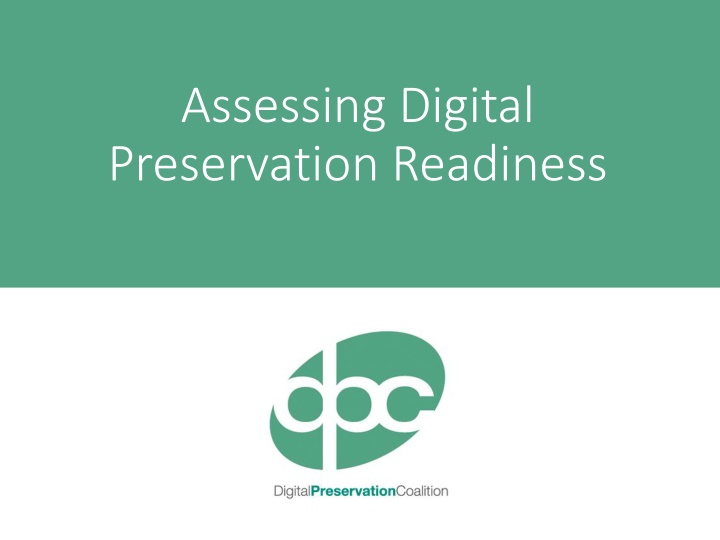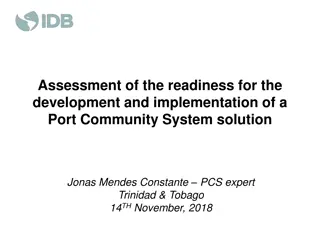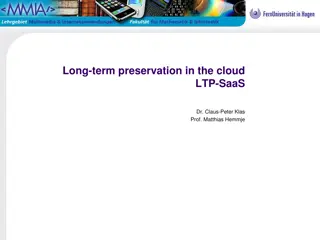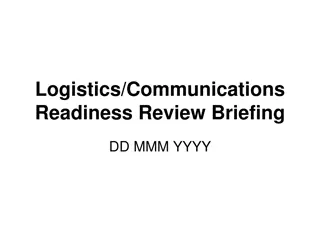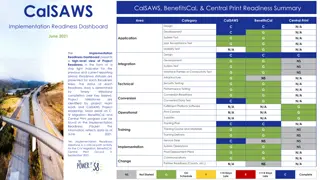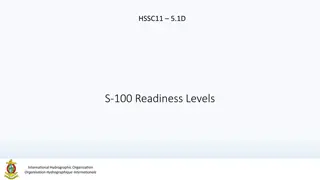Assessing Digital Preservation Readiness: A Comprehensive Guide
Explore the key aspects of digital preservation readiness, including assessing current status, setting goals for improvement, benchmarking strengths and weaknesses, maturity models, and important questions to consider before starting. The guidance covers the NDSA Levels of Digital Preservation, categories, levels, and example scenarios for safeguarding data integrity and security.
Download Presentation

Please find below an Image/Link to download the presentation.
The content on the website is provided AS IS for your information and personal use only. It may not be sold, licensed, or shared on other websites without obtaining consent from the author.If you encounter any issues during the download, it is possible that the publisher has removed the file from their server.
You are allowed to download the files provided on this website for personal or commercial use, subject to the condition that they are used lawfully. All files are the property of their respective owners.
The content on the website is provided AS IS for your information and personal use only. It may not be sold, licensed, or shared on other websites without obtaining consent from the author.
E N D
Presentation Transcript
Assessing Digital Preservation Readiness
Assessing Readiness How are we doing just now? How do we want to improve? Illustration by J rgen Stamp digitalbevaring.dk CC BY 2.5 Denmark
Benchmarking Strengths and weaknesses Goals and timescales Incremental development Planned improvements Not just about techniques Illustration by J rgen Stamp digitalbevaring.dk CC BY 2.5 Denmark
Maturity Models Today: Digital Preservation Capability Maturity Model NDSA Levels of Digital Preservation But also: Adrian Brown s advice on Maturity Modelling AIDA and CARDIO Cornell s 5 stages DRAMBORA Illustration by J rgen Stamp digitalbevaring.dk CC BY 2.5 Denmark
Some Questions Before Starting. How much of the organisation is in scope? How much can you rely on others? What will you gain from the exercise? Illustration by J rgen Stamp digitalbevaring.dk CC BY 2.5 Denmark
Digital Preservation Capability Maturity Model
NDSA Levels of Digital Preservation Focused on technological solutions Assesses maturity in 5 categories against 4 levels Illustration by J rgen Stamp digitalbevaring.dk CC BY 2.5 Denmark
Categories and Levels Storage and Geographic Location File Fixity and Data Integrity Information Security Metadata File Formats Level 1 Protect Your Data Level 2 Know Your Data Level 3 Monitor Your Data Level 4 Repair Your Data
Example: File Formats Level One (Protect Your Data) Level Two (Know Your Data) Level Three (Monitor Your Data) Level Four (Repair Your Data) Metadata - Inventory of content and its storage location - Ensure backup and non- collocation of inventory - Store administrative metadata - Store transformative metadata and log events - Store standard technical and descriptive metadata - Store standard preservation metadata
Building on Results Identify stress points/risks Help set objectives Prioritise developments Use as an advocacy tool Illustration by J rgen Stamp digitalbevaring.dk CC BY 2.5 Denmark
The Other Side of the Coin Accreditation or Certification Consider when establishing aims Choose the best fit for your organisation Illustration by J rgen Stamp digitalbevaring.dk CC BY 2.5 Denmark
